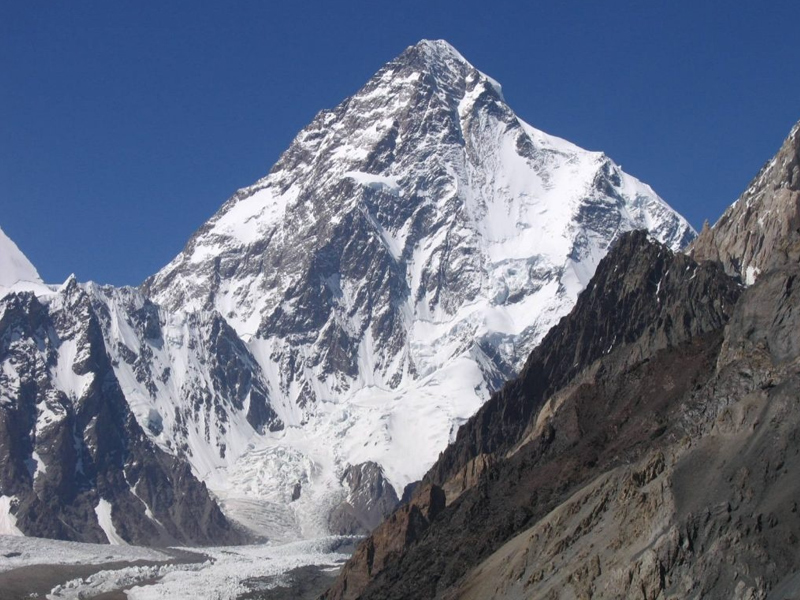Mount Karkas is one of the magnificent mountains in Iran, which many people have discovered and conquered at its peak. If you have an interest in mountaineering or have experienced this activity once or twice, you undoubtedly know that the joy of reaching the summit is incomparable. As the name suggests, Mount Karkas must be a place where even vultures cannot fly higher. Now, in this article from Eligasht, we are here to share interesting information about this mountain with you.
Book Iran Air flights from London to Tehran and Tehran to London with Eligasht UK:
Mount Karkas for professional climbers
Mount Karkas is located in Natanz, and to travel and climb this mountain, you first need to reach Isfahan from wherever you are. From Isfahan, you can take vehicles that will take you to this area and head to Mount Karkas. Traveling by train, private car, airplane, and bus are among the options available to you for traveling to this area.
The Story Behind Naming Mount Karkas
Mount Karkas is not only a mountain of physical challenges but also a place steeped in legends and folklore. One such legend revolves around the name of the mountain itself. It might be surprising for you to wonder why this mountain is named Karkas. Of course, the first thing that comes to mind for everyone is that maybe this mountain was a habitat for birds like vultures. This assumption is not wrong! One of the reasons for naming Mount Karkas is the presence of black vultures that can be observed around it. But the main story behind it is a bit more exciting than these assumptions.
According to the beliefs and local legends, Mount Karkas was once so tall that even birds like vultures couldn’t fly over it. However, it’s interesting to know that another legend exists alongside these two assumptions. Some believe that a vulture unintentionally or intentionally overturns a cup soaked in Shah Abbas’s venom. Shah Abbas becomes furious and kills the bird. But later, he regrets his action and builds a mausoleum for the bird on top of Mount Karkas to compensate for the incident. That’s why this mountain is called Mount Karkas.
A Journey to the Summit
Embarking on a climb to the summit of Mount Karkas is not for the faint of heart. It requires careful planning, physical endurance, and a deep appreciation for the beauty of nature. The journey begins by reaching Isfahan, a city known for its rich history and vibrant culture. From there, adventurers can make their way to Mount Karkas using various transportation options such as private cars or buses
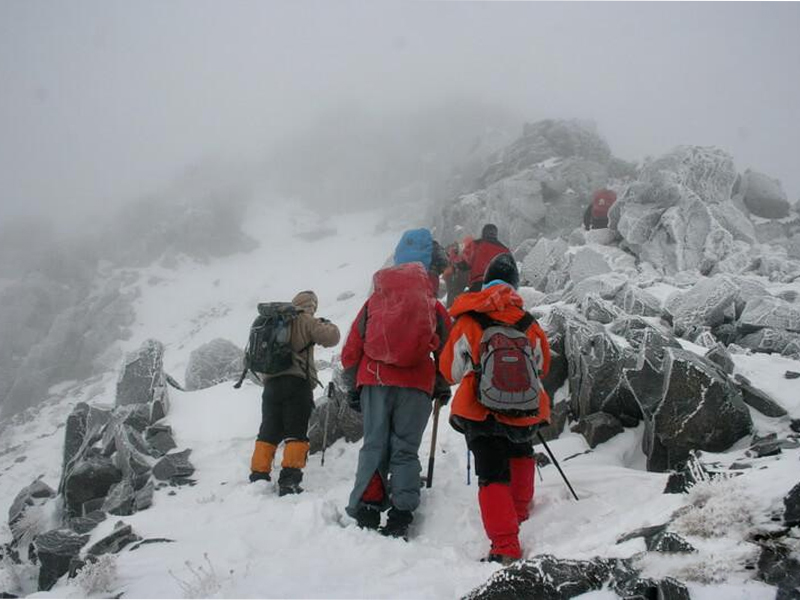
Route to Ascend and Access Mount Karkas
To go to Mount Karkas and ascend to its peak, first of all, you need to know that this mountain has an approximate height of 3850 meters. In other words, climbing it is a suitable and interesting practice for those who are interested in experiencing the ascent of peaks above 4000 meters. One of the most famous and frequently traveled routes that leads to this mountain is the southern route or the “Keshe” route.
If this route is your choice, you must cover a distance before reaching it. Along your road and path, you will encounter walnut trees that serve as markers for your proper access to this mountain. If you get tired, the shade of these trees will be the best refuge for you. Additionally, there is a small spring flowing under these trees that can change your mood. Then you will find a steep path, and from here, your main mountaineering journey towards Mount Karkas begins. Climbing to this peak from the Keshe route depends on your speed and will take approximately 5 to 7 hours. Therefore, you can easily experience your ascent to Mount Karkas in a one-day itinerary.
Facilities available on the ascent route
On the ascent route to Mount Karkas, you will come across multiple natural shelters where climbers can rest and refresh themselves. However, most climbers start their journey to this mountain early in the morning, and ultimately, it is your decision whether to rest in these shelters or not!
It’s worth noting that these shelters have a large capacity to accommodate many people for rest. Alongside these shelters, there is a spring called “Keshe Spring.” Climbers can easily fill their water bottles with the water of this spring without any worries. Interestingly, other facilities such as toilets are also provided along this route, which is considered one of the strengths of the ascent route to this mountain. Make sure to fill up your water bottles from the taps located next to the spring before heading towards the toilets. Then leave the empty bottles back in their original place next to the spring so that everyone knows they have been used and can maintain order.
Vegetation cover of mount Karkas
The mountainous slopes of Mount Karkas have a relatively good vegetation cover due to ample water resources, moderate climate conditions, and the growth of various grasses, ornamental plants, and commercially valuable plants. The predominant vegetation in the area consists of shrubs such as different types of grasses, thyme, sagebrush, and medicinal plants, scattered throughout the region. However, in higher elevations, the harsh cold and snow cover for half of the year, as well as the intense heat and sunlight for the other half, limit the vegetation to thorny shrubs and sparse growth.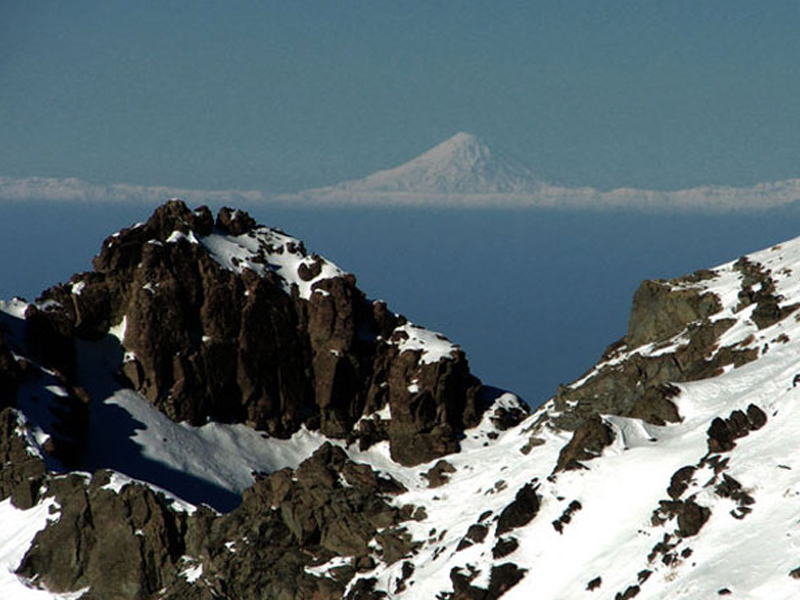
The protected area of Mount Karkas is home to a diverse range of plant species. Studies have identified 290 plant species belonging to 206 genera and 52 plant families within the Karkas region.
Attractions of Mount Karkas
It’s no secret that the ascent route to Mount Karkas is not as lush as Azad Kooh or Alam Kooh. However, it undoubtedly has unique and unforgettable attractions of its own. Along this route, you can smell the pleasant scents of various medicinal plants and get acquainted with them up close. If you’re lucky, you may come across ibexes, wild goats, and deer along your journey. This area is protected and serves as a safe place for various animals and wildlife. It’s worth mentioning that hunting is prohibited in this area, which has allowed different valuable species to grow and thrive. Additionally, various types of snakes and agamas have been observed in the surrounding area of Mount Karkas, which can be an interesting and important point for reptile enthusiasts.
Related post
Famous and Historical Churches of Isfahan
Luxury and Convenience Unite: Experience Unforgettable Stays at Abbasi Hotel in Isfahan
Upside-down Tulips of Mount Karkas
Another noteworthy attraction is the upside-down tulips around this mountain. If you visit this area in spring, you can easily see these tulips. When you reach the peak, all of these beauties will be beneath your feet. The logo of the peak is also designed exactly like a karkas (a type of crane bird). Don’t forget that if you want to have clear proof of your ascent to this area, make sure to take a photo with a signboard that has the emblem of Mount Karkas on it. Then, upon your return after paying a small fee, collect your certificate from the official responsible for Mount Karkas, located in the shelter.
Other Access Routes to Mount Karkas
You should also know that this mountain is not crowded enough to be bothersome for climbers. Especially if you choose a time when there is less traffic, the route will have a peaceful and unique atmosphere for you. Furthermore, besides the southern route, there are other routes available for ascent, such as the northwest route or “Bid Hand,” the eastern route or “Tameh,” and the northeast route or “Oreh.” In any case, it is up to you to choose which route to take for your ascent.
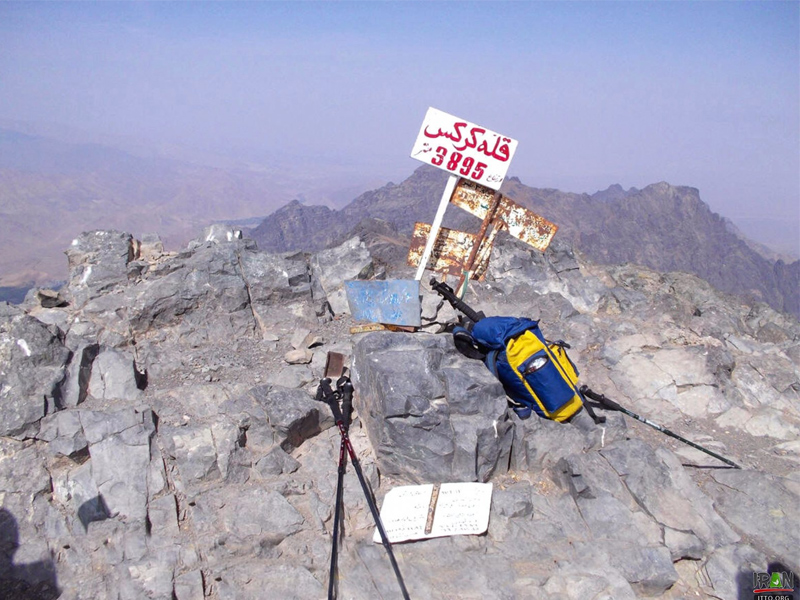
Equipment needed for ascending Mount Karkas
Without a doubt, mountaineering in any route and to any peak requires the necessary equipment. Mount Karkas is no exception, and you must have the required equipment with you for your ascent, depending on the chosen season.
In general, it is recommended to have trekking poles or a pair of boots, a hat, sunglasses, a water bottle, essential medications, sunscreen, sturdy shoes, and warm clothing. Additionally, if you choose to climb in the cold season, you may need an ice axe or crampons. Alongside all these items, make sure to drink enough water and carry small and lightweight snacks for sustenance during your climb. If you plan to stay overnight in the area, do not forget to bring a sleeping bag.
Essential tips for ascending Mount Karkas
There is a designated route for ascending this peak, with clear markings along the way. However, our recommendation is to use a guide or have the route file or map with you. The reason for this is that in certain sections of the route, it splits into two paths, and it may lead you astray.
Another important point is that Mount Karkas is not significantly higher or taller than other peaks in the country. Therefore, the likelihood of altitude sickness is lower. However, it is still advisable to practice deep and regular breathing to prevent this issue. It is important to note that if someone experiences altitude sickness, they may have symptoms such as nausea, dizziness, and headache, which will subside as the altitude decreases.
It is also better not to spend a long time on the summit, especially if you do not have much experience with high altitudes. In the end, try to not litter the natural environment, both as a mountaineer and as an athlete. Even remove any existing litter from the mountain and clean the trail. Cleaning a trail that lacks proper facilities can be challenging. Therefore, never leave your trash along the route. Additionally, cleaning the trail of litter can provide a better and more pleasant experience for you and those around you.
Mount Karkas and observing the area from Karkas’ perspective
Mount Karkas is one of the most attractive mountains and highlands in Iran, and ascending it will be an enjoyable experience. Its towering presence and challenging terrain make it a thrilling destination for those seeking an exhilarating climb to the sky. Whether you are an experienced mountaineer or attempting to climb this area for the first time, it is better to take care of nature and the surrounding environment, befriend it, and strive to preserve and revive it.
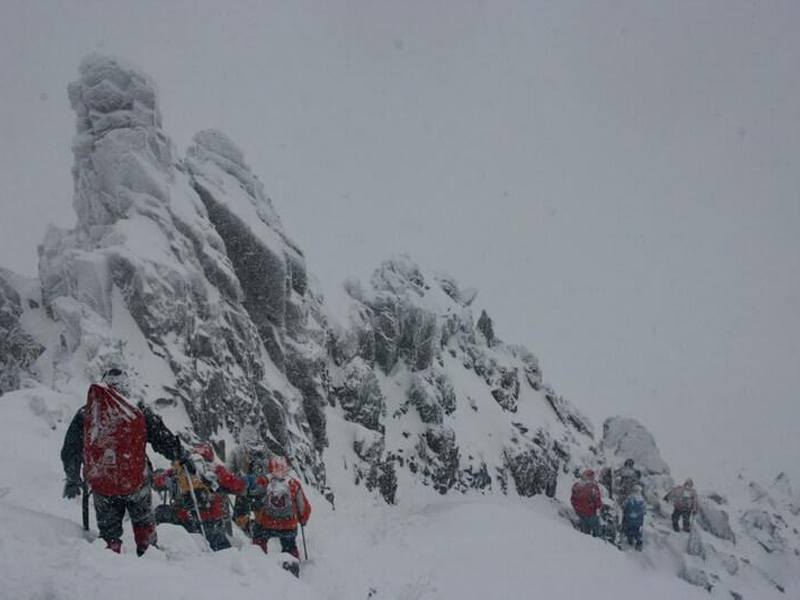
FAQ
1- How difficult is it to climb Mount Karkas?
Climbing Mount Karkas can be challenging, especially for beginners. The steep slopes and rugged terrain require physical fitness and mountaineering skills. It is recommended to have prior climbing experience or to climb with an experienced guide.
2- Are there any accommodations available near Mount Karkas?
Yes, there are accommodations available near Mount Karkas. Hotels, guesthouses, and camping sites provide options for climbers and tourists to stay during their visit. It is advisable to make reservations in advance, especially during peak climbing seasons.
3- Is it necessary to hire a guide for climbing Mount Karkas?
While it is not mandatory to hire a guide, it is highly recommended, especially for inexperienced climbers. A guide can provide valuable assistance, ensure safety, and navigate through the mountain’s challenging terrain.
4- Are there any restrictions or permits required for climbing Mount Karkas?
As of now, there are no specific restrictions or permits required for climbing Mount Karkas. However, it is always advisable to check with local authorities or mountaineering associations for any updated regulations or guidelines.
5- What is the best time to climb Karkas mountain?
The best time to climb Mount Karkas is during the spring and autumn seasons when the weather is mild and favorable for outdoor activities. It is important to avoid extreme weather conditions and check the weather forecast before planning your ascent.
